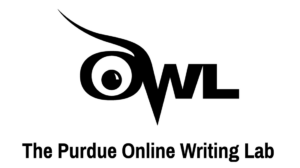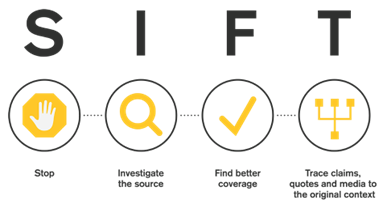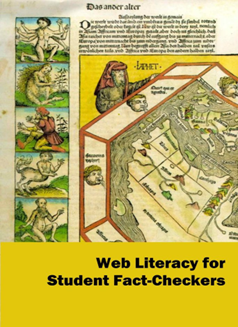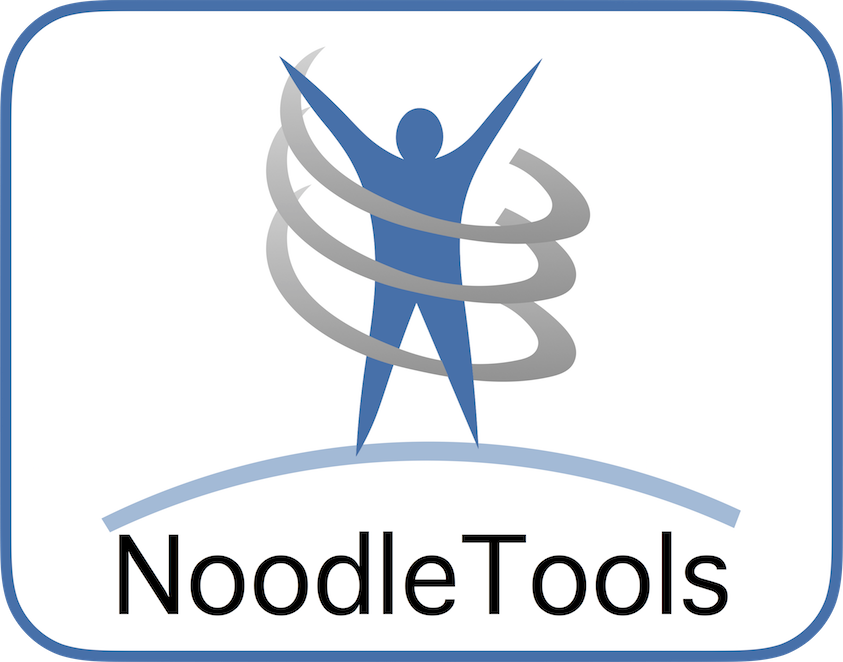 Owl Purdue Writing Lab – The Purdue University Online Writing lab serves writers from around the world by providing resources on writing, research, grammar and mechanics, style guides, ELL, and job search and professional writing.
Owl Purdue Writing Lab – The Purdue University Online Writing lab serves writers from around the world by providing resources on writing, research, grammar and mechanics, style guides, ELL, and job search and professional writing.
Read through the 5 sections in Evaluating Sources, starting with the Introduction.
 The SIFT method is an evaluation strategy developed by digital literacy expert, Mike Caulfield, to help determine whether online content can be trusted for credible or reliable sources of information. Determining if resources are credible is challenging. Use the SIFT method to help you analyze information, especially news or other online media.
The SIFT method is an evaluation strategy developed by digital literacy expert, Mike Caulfield, to help determine whether online content can be trusted for credible or reliable sources of information. Determining if resources are credible is challenging. Use the SIFT method to help you analyze information, especially news or other online media.
 “Web Literacy for Student Fact-Checkers” is a practical guide that will show you the opportunities and pitfalls of searching for truth on the web, including:
“Web Literacy for Student Fact-Checkers” is a practical guide that will show you the opportunities and pitfalls of searching for truth on the web, including:
- how to assess the reputation of a scientific journal in less than five seconds
- how to see if a tweet is really from the famous person you think it is or from an impostor
- how to find pages that have been deleted, figure out who paid for the website you’re looking at,
- how to check a Wikipedia page for recent vandalism
- how to search the text of almost any printed book to verify a quote
- how to parse URLs and scan search result blurbs so that you are more likely to get to the right result on the first click
- how to avoid baking confirmation bias into your search terms.
 Noodletools is the research platform available to all West Vancouver Schools students.
Noodletools is the research platform available to all West Vancouver Schools students.
The “Show Me” modules provide a guide in information evaluation:
What constitutes credible information?
How does source type contribute to relevance, authority and point-of-view?
How do I evaluate and cite born-digital images and online sources?
 Owl Purdue Writing Lab – The Purdue University Online Writing lab serves writers from around the world by providing resources on writing, research, grammar and mechanics, style guides, ELL, and job search and professional writing.
Owl Purdue Writing Lab – The Purdue University Online Writing lab serves writers from around the world by providing resources on writing, research, grammar and mechanics, style guides, ELL, and job search and professional writing.

